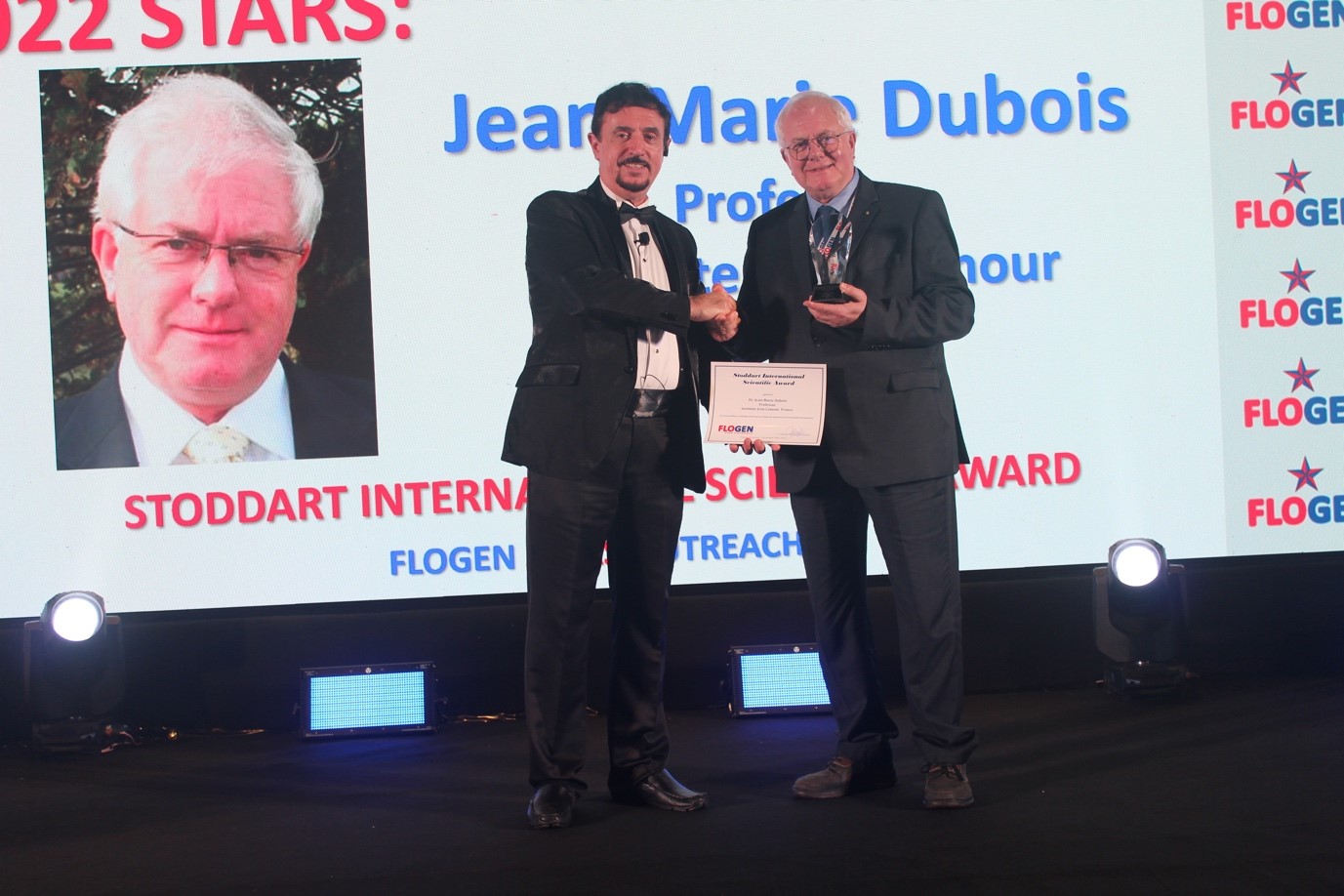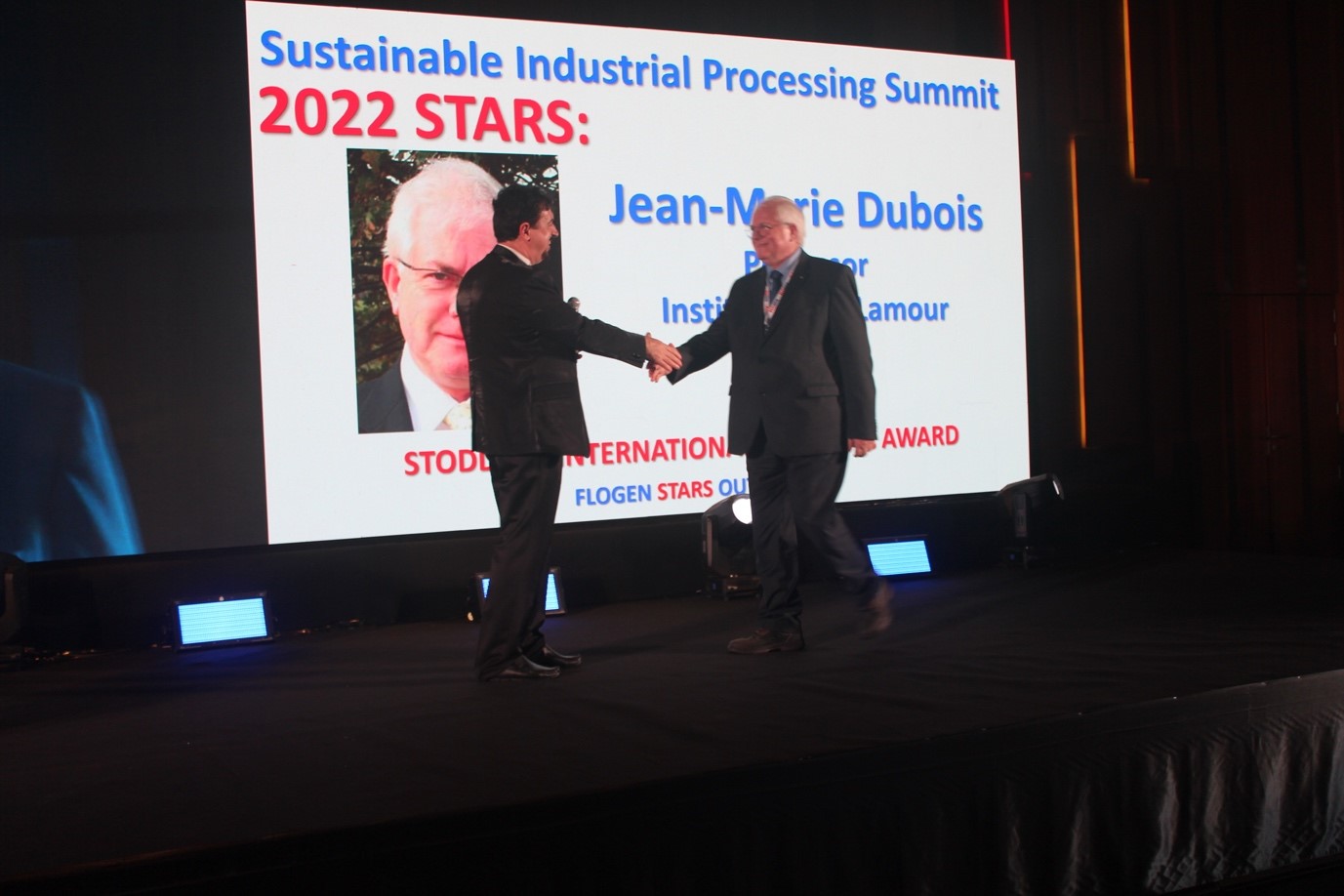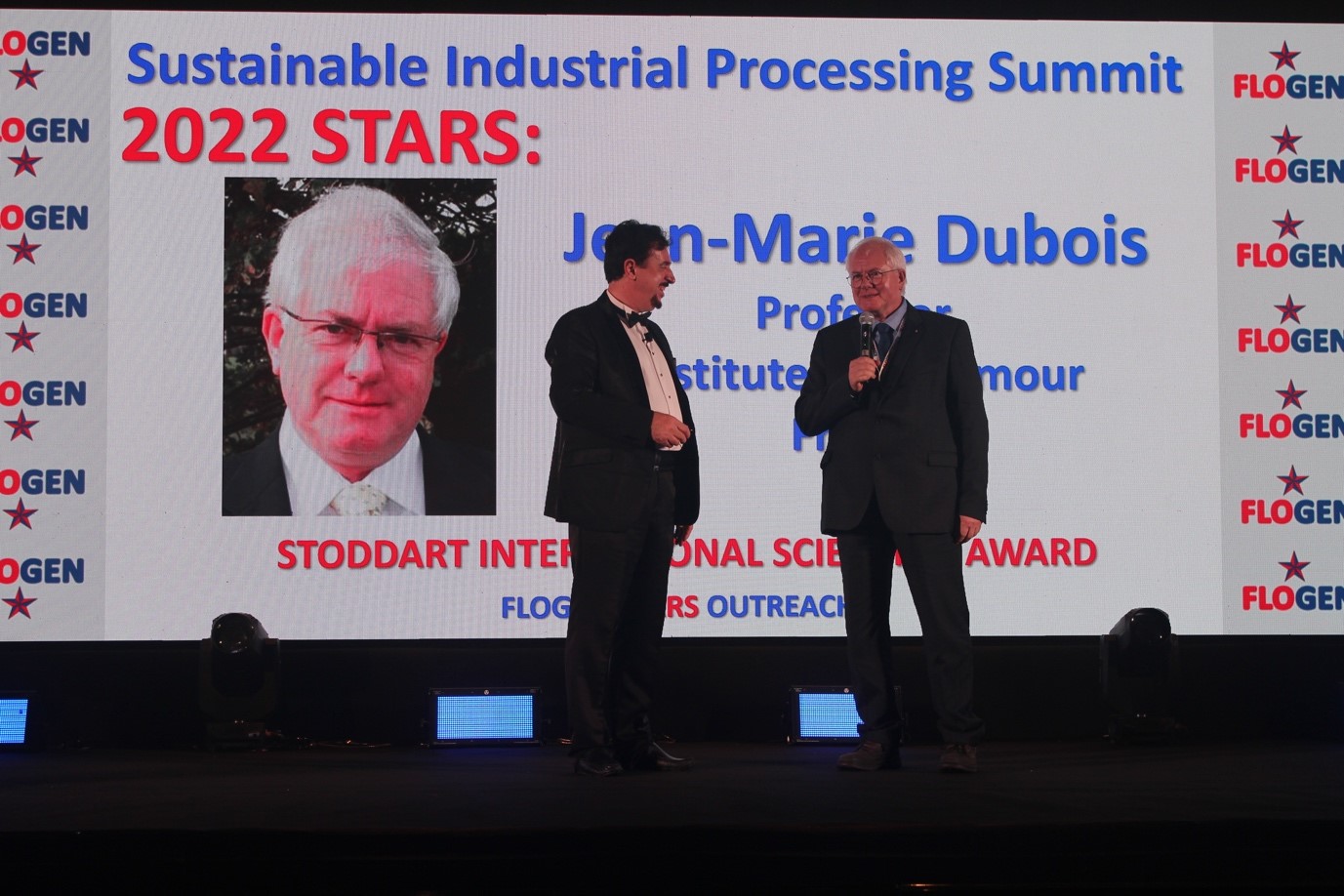
Prof. Jean-Marie Dubois is well known in the areas of complex metallic systems, quasicrystals, large unit cell crystals, and amorphous metals. He has dedicated himself to research mainly in the metallurgy laboratory of the School of Mines in Nancy. He also spent significant amounts of time abroad as a guest scientist or a visiting professor in several universities and more recently at Jozef Stefan Institute in Slovenia. Several books, around 400 scientific peer-reviewed articles, chapters, patents and diverse contributions were issued from his works.
Throughout his career, his activity has impacted various fields:
Transition metal-metalloid glasses
Dubois started his career by studying transition metal-metalloid (TM-ME) glasses. He showed how Using Mossbauer spectroscopy may prove highly useful to better understand the local order in such materials. Those studies were completed by polarized neutron diffraction and EXAFS experiments. Based on a computer-generated model, he could demonstrate how medium range order builds up in a metallic glass, yet preserving the short-range order characteristic of the crystal of composition similar to that of the glass.
Aluminum-based amorphous alloys
Dubois' model could predict the existence of aluminum-based glasses that had never been pointed out so far. Using rapid solidification techniques, Dubois could thus produce metallic glasses out of alloy systems containing Al as a majority constituent, which he secured in a patent dated 1982. A broad collaboration scheme was organized under the leadership of the research center of Pechiney to explore this discovery and its potential usefulness.
Lattice structure of quasicrystals
Quasicrystals appeared in literature by the end of 1984 and Dubois started immediately to explore by neutron diffraction the thermal stability of (metastable) Al-Mn quasicrystals. Using isomorphous substitution, he produced the first diffraction pattern of the aluminum lattice alone. The very first rudimentary models of the lattice structure of a quasicrystal could thus be constructed. Because he was the metallurgist who mastered the preparation of high quality samples, Dubois became involved in a significant number of other studies, including electron and atomic transport, surface properties, mechanical behavior, etc.
Electronic structure of quasicrystals
In the frame of a strong -and still lasting- collaboration with Esther Belin-Ferré, using soft X-ray emission spectroscopy, he started a study of the electronic densities of states in quasicrystals and related compounds. The presence of a pseudo-gap of varying depth and width at the Fermi energy was assessed in several tens of compounds. It was correlated to a bench of other properties such as electronic conductivity, adhesion, and friction. Its role in stabilizing complex compounds was quantified.
Applied properties of quasicrystals
Dubois discovered a large number of the applied properties of quasicrystals: thermal insulation for thermal barriers, low friction for mechanical devices, infra-red absorption for solar heating, low adhesion against organic materials for cookware, bound coats for high-temperature surface coatings, high corrosion resistance, etc.
Complex metallic alloys
With Knut Urban and Louis Schlapbach, Dubois has pioneered the field of complex metallic alloys, i.e. crystals that are periodic and are characterized by a unit cell that contains several tens up to several thousands atoms. His personal contributions are in line with deciphering property-complexity relationships in metallic alloys. Obtaining, for the first time, reliable surface energy data for those alloys fits within this frame.
Push-Pull alloys
The current research interests of Dubois are on Push-Pull Alloys (PPA), i.e. A-B-C ternary systems, in which two atomic pairs are attractive and the third one is repulsive. The idea is to manage a systematic investigation of the many, still unexplored, PPA systems based on metals and/or metalloids, with the goal to clarify their formation mechanisms, stability and properties as well as to see if they can be of any usefulness or not.
Dubois is a metallurgist who was lucky enough to be promoted to a full professorship at an early age, so that he had the freedom to manage significant projects. He acted as coordinator of a dozen of collaborative projects, as the head of few research units of CNRS, and he was the founding director of Institut Jean Lamour, so far the largest public research laboratory dedicated to materials science and engineering in France.

Prof. Jean-Marie Dubois, Receiving the Stoddart International Scientific Award from Dr. Florian Kongoli at FLOGEN SIPS 2022

Dr. Florian Kongoli congratulating Prof. Jean-Marie Dubois on his award at FLOGEN SIPS 2022

Prof. Jean-Marie Dubois, Delivering his acceptance speech to Dr. Florian Kongoli during the FLOGEN SIPS 2022 ceremony
FLOGEN SIPS 2022 Awards: Dr. Jean-Marie Dubois, Professor, Institute Jean Lamour, France